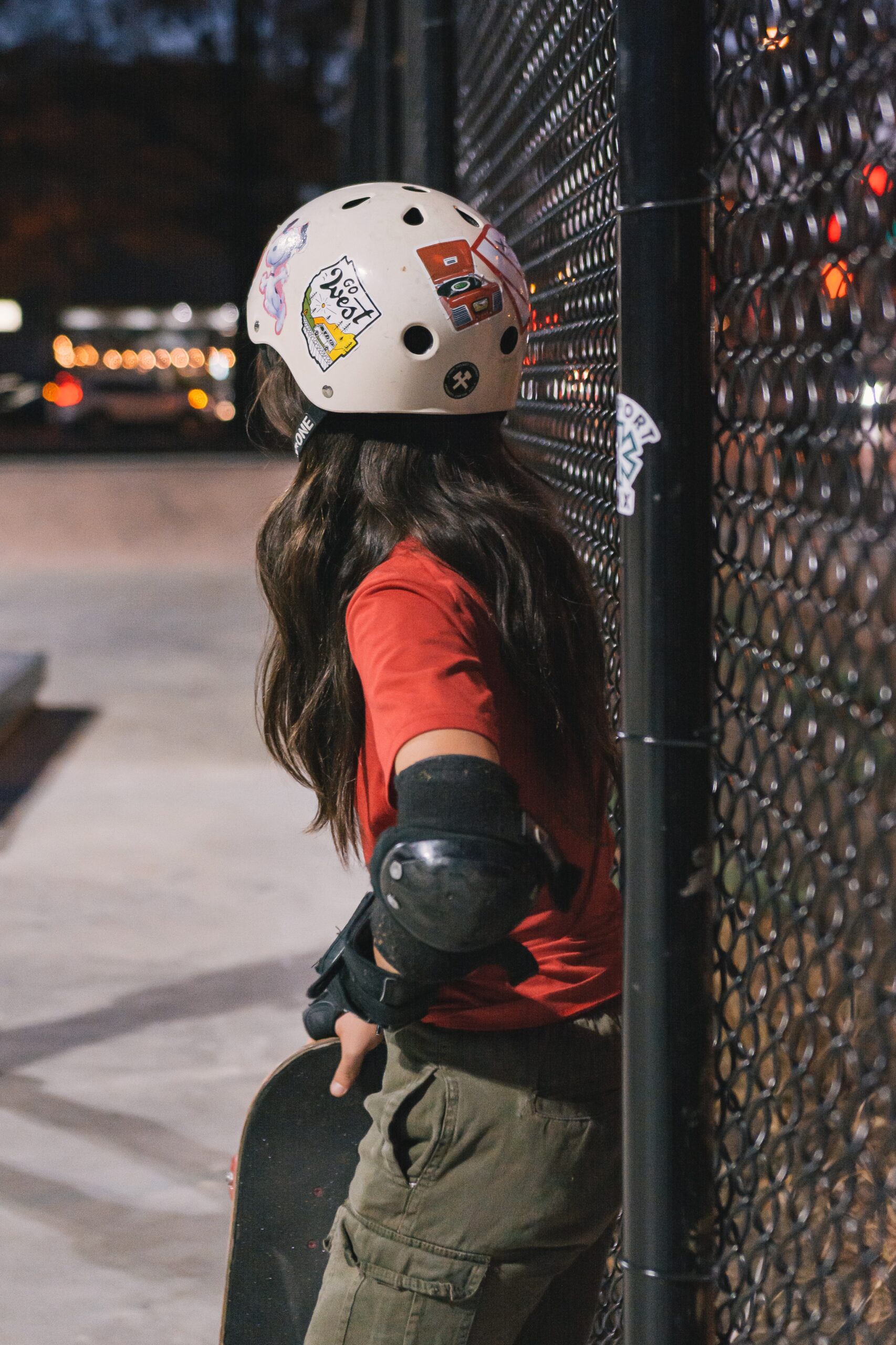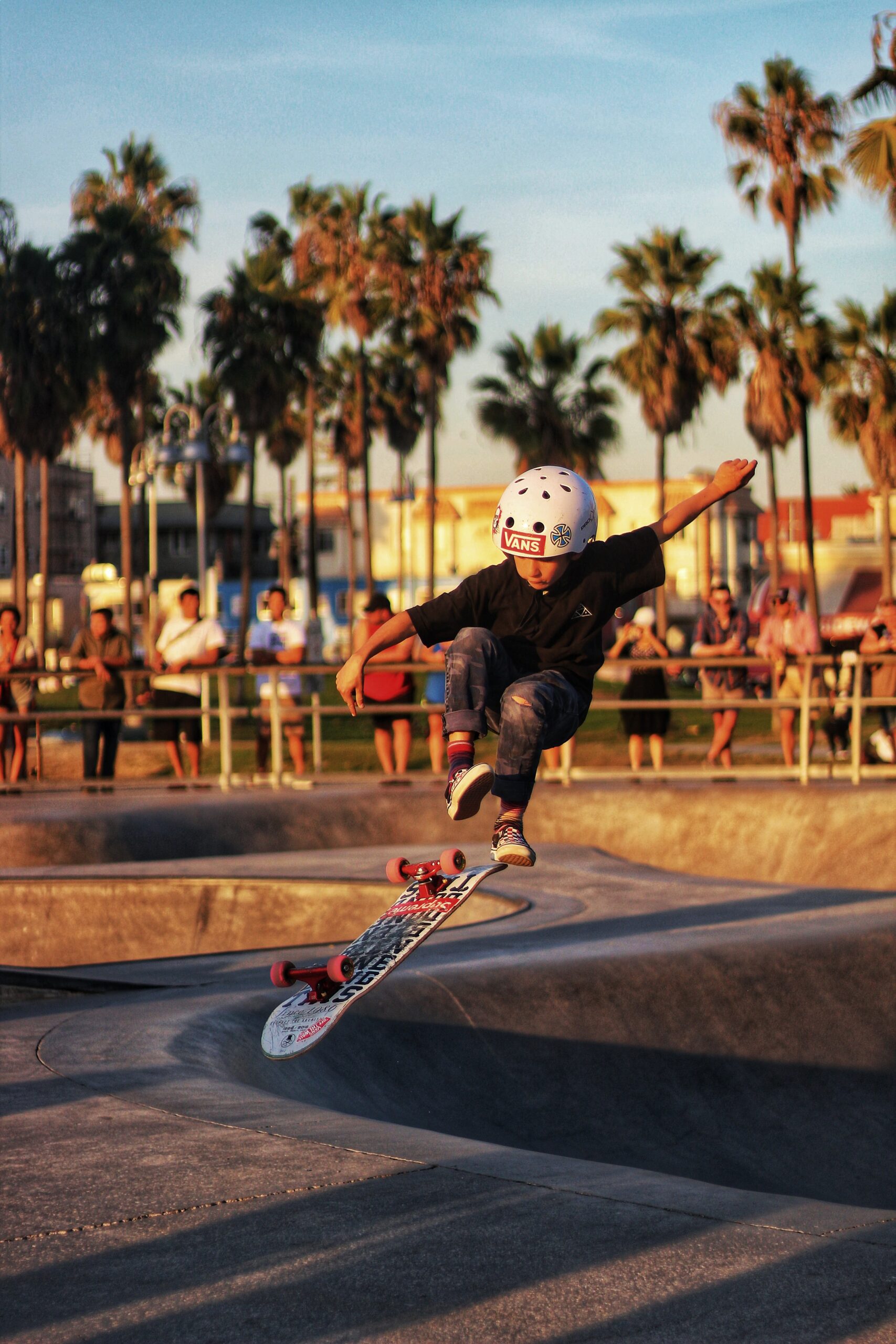Looking for the perfect skateboard helmet that not only ensures your safety but also showcases your unique style? Look no further! This article will guide you through the process of choosing the right skateboard helmet that combines both safety and style effortlessly. With a wide range of options available, it can be overwhelming to make the right choice, but fear not, we’ve got you covered. Read on to discover the key factors to consider when selecting a skateboard helmet that not only protects your head but also reflects your personal style.
Identifying the Right Fit
Measure Your Head Size
When it comes to choosing the right skateboard helmet, one of the most important factors to consider is the fit. A properly fitting helmet will offer maximum protection and ensure your safety while skateboarding. To determine your head size, use a measuring tape and measure the circumference of your head just above your eyebrows and ears. This measurement will give you an idea of the helmet size you should be looking for.
Check the Helmet Size Chart
Once you have measured your head size, it’s important to check the helmet size chart provided by the manufacturer. Different brands may have slightly different sizing, so make sure to refer to the specific chart for the helmet you are considering. The size chart will typically provide a range of head sizes and the corresponding helmet sizes. It is important to choose a size that is snug but not too tight, as a helmet that is too loose will not provide adequate protection.
Consider Adjustable Helmets
If you are unsure about the size or have difficulty finding a helmet that fits perfectly, consider opting for an adjustable helmet. Adjustable helmets usually come with a dial or strap system that allows you to customize the fit according to your preference. This ensures a snug and secure fit, providing you with the necessary safety while also allowing for some flexibility in terms of sizing.
Try On Different Brands and Models
Every brand and model of skateboard helmet may have slightly different shapes and fits. It’s a good idea to try on different brands and models to find the one that suits you best. Different helmets may have variations in padding, strap placement, and overall design, so it’s important to find a helmet that feels comfortable on your head. Many skateboarding stores or sporting goods stores have a variety of helmets available for fitting, so take the time to try on different options before making a decision.
Understanding Safety Certifications
Recognized Safety Standards
When selecting a skateboard helmet, it is crucial to ensure that it meets recognized safety standards. Look for helmets that comply with safety standards such as the CPSC (Consumer Product Safety Commission) certification, ASTM F1492 (American Society for Testing and Materials), or EN 1078 (European Standard). These certifications ensure that the helmet has undergone rigorous testing to meet safety requirements and provide adequate protection.
Look for Helmet Certification Stickers
To easily identify whether a helmet meets safety standards, look for the certification stickers on the helmet. These stickers are typically placed on the inside or outside of the helmet and indicate that it has been certified by the relevant safety organizations. Always make sure that the helmet you choose has the necessary certification stickers to ensure your safety while skateboarding.

Choosing the Appropriate Helmet Type
Full-Face Helmets
Full-face helmets provide the most comprehensive protection as they cover not only your head but also your face. These helmets are typically used for more aggressive skateboarding disciplines such as downhill racing or freeriding where the risk of injury is higher. If you engage in high-speed or extreme skateboarding activities, a full-face helmet may be the most suitable option for you.
Open-Face Helmets
Open-face helmets, also known as half-shell helmets, cover the top and sides of your head but leave your face exposed. These helmets provide protection for the most critical areas of your head while still allowing for better airflow and visibility compared to full-face helmets. Open-face helmets are a popular choice for general skateboarding and offer a good balance between protection and comfort.
Half-Shell Helmets
Half-shell helmets provide minimal coverage and are typically used for less aggressive skateboarding styles such as cruising or street skateboarding. These helmets cover only the top of your head and do not offer protection for your face or the sides of your head. While they may not provide the same level of protection as full-face or open-face helmets, half-shell helmets are lightweight and offer more freedom of movement.
Prioritizing Safety Features
Impact Absorption
One of the key safety features to look for in a skateboard helmet is its impact absorption capabilities. Helmets with multiple layers of foam or specialized impact-absorbing materials are designed to absorb and distribute the force of any impact, reducing the risk of a head injury. Look for helmets that have been specifically engineered to provide superior impact absorption to ensure your safety while skateboarding.
Protection for Vulnerable Areas
When assessing safety features, pay attention to how well the helmet covers vulnerable areas such as the temples and the back of the head. Ensure that the helmet you choose provides adequate coverage to protect these sensitive areas from potential injuries. The more coverage a helmet offers, the better it can protect you from impacts from various angles.
Ventilation
Ventilation is an important consideration, especially if you skateboard in hot or humid conditions. Look for helmets with ample ventilation vents that allow for airflow and help keep your head cool during intense skateboarding sessions. Proper ventilation not only reduces discomfort but also helps prevent overheating and allows for better focus and concentration while skateboarding.
Comfort Padding
Comfort is an essential aspect of choosing the right skateboard helmet. Helmets with comfortable padding not only provide a cushioning effect but also ensure a snug fit. Look for helmets with soft and moisture-wicking padding that can be easily removed and washed. Comfort padding will enhance your overall comfort and make wearing the helmet for extended periods more enjoyable.
Adjustable Straps and Buckles
Having adjustable straps and buckles is crucial for achieving a secure and comfortable fit. Pay attention to the strap and buckle system of the helmet you are considering. Adjustable straps allow you to customize the tension according to your preference, ensuring that the helmet remains securely in place while skateboarding. Opt for helmets with sturdy and user-friendly buckles that are easy to fasten and release.

Considering Material and Weight
Hard Shell Helmets
Hard shell helmets are constructed with a tough outer shell made of ABS (Acrylonitrile Butadiene Styrene) plastic. These helmets are known for their durability and are designed to withstand multiple impacts. While hard shell helmets may be slightly heavier compared to other helmet types, they offer excellent protection and are a popular choice for skateboarders seeking enhanced durability.
In-Mold Helmets
In-mold helmets feature a fusion of the outer shell and the impact-absorbing foam. The outer shell of the helmet is molded directly to the foam, resulting in a lightweight and sturdy design. In-mold helmets are generally lighter and more comfortable to wear compared to hard shell helmets. They offer reliable protection and are suitable for various skateboarding disciplines.
Multi-Impact Helmets
Multi-impact helmets are specifically designed to withstand repeated impacts without compromising their protective capabilities. These helmets are engineered with a combination of durable outer shells and multi-impact foam liners that can absorb multiple impacts. If you often engage in high-impact skateboarding activities or have a history of falls, opting for a multi-impact helmet may be a wise choice.
Lightweight Options
Weight can be a significant factor when choosing a skateboard helmet, especially if you prefer a lighter helmet that won’t feel burdensome during long skateboarding sessions. Look for helmets that are specifically designed to be lightweight, as they can provide greater comfort and minimize fatigue. Keep in mind that lightweight helmets may sacrifice some durability, so find a balance that suits your needs and preferences.
Assessing Style and Design Preferences
Color and Graphics
Skateboard helmets come in a wide variety of colors and often feature unique graphics and designs. When it comes to style, choose a helmet that reflects your personality and matches your skateboard or personal aesthetic. Whether you prefer vibrant colors and bold patterns or a more minimalist design, there is a helmet out there for everyone. Remember, safety should always be the top priority, but there’s no harm in expressing your personal style while staying protected.
Helmet Shape and Profile
Helmet shape and profile can also contribute to your overall style and comfort. Some helmets have a more rounded shape, while others have a more angular or aerodynamic design. Consider your head shape and personal preference when selecting a helmet. Trying on different helmets will help you determine which shape and profile best suit your needs.
Customization Options
If you’re the type of skateboarder who loves to stand out from the crowd, look for helmets that offer customization options. Some helmets come with removable or interchangeable parts such as visors, foams, or straps. This allows you to personalize your helmet according to your preferences and keep your look fresh. Customization options can be a fun and creative way to express your individuality while still prioritizing safety.

Reviews and Recommendations
Read User Reviews
To get a better understanding of the performance and quality of a helmet, it’s helpful to read user reviews. Look for reviews from skateboarders who have already purchased and used the helmets you are considering. Pay close attention to their feedback on comfort, durability, and overall satisfaction. User reviews can provide you with valuable insights and help you make an informed decision.
Seek Recommendations from Skateboarding Communities
Skateboarding communities, both online and offline, can be a great resource when it comes to choosing the right skateboard helmet. Reach out to fellow skateboarders and ask for their recommendations based on their personal experiences. They can provide insights and suggestions that may not be readily available in product descriptions or user reviews. Additionally, interacting with the skateboarding community can help you discover new helmet brands or models that you may not have considered before.
Professional Recommendations
If you want expert opinions and advice, consider seeking recommendations from professionals in the skateboarding industry. Professional skateboarders, skateboarding coaches, or staff at specialized skateboarding stores can provide valuable insights into the best helmet options available. These individuals have extensive knowledge and experience in the sport and can guide you in selecting a helmet that meets your specific needs and preferences.
Considering Budget
Determine Your Budget Range
Before making a final decision on your skateboard helmet, it’s essential to determine your budget range. The price of helmets can vary significantly, from budget-friendly options to high-end models. Have a clear idea of how much you are willing to spend on a helmet and stick to that budget. Keep in mind that the cost of a helmet often reflects its quality and additional features, so finding the right balance between cost and value is crucial.
Evaluate Cost-Quality Ratio
While it may be tempting to go for the cheapest option available, it’s important to consider the overall quality and safety of the helmet. Evaluate the cost-quality ratio by comparing the price of the helmet with its safety certifications, features, and durability. Investing in a high-quality helmet that meets safety standards will provide you with long-lasting protection and peace of mind while skateboarding.
Checking Warranty and Return Policy
Warranty Coverage
Before purchasing a skateboard helmet, take the time to check the warranty coverage provided by the manufacturer. A good helmet should come with a warranty that protects against defects in materials or workmanship. Familiarize yourself with the terms and conditions of the warranty, including the duration and any limitations or exclusions. A reliable warranty ensures that you can seek recourse in the event of any unforeseen issues with your helmet.
Return or Exchange Policy
In addition to checking the warranty, familiarize yourself with the return or exchange policy of the retailer. It’s possible that even after careful consideration, the helmet you choose may not fit or meet your expectations. Understanding the return or exchange policy beforehand will give you peace of mind, knowing that you have the option to return or exchange the helmet if needed. Ensure that the retailer has a fair and reasonable policy that allows for hassle-free returns or exchanges.
Maintenance and Care
Cleaning Instructions
Proper maintenance and care of your skateboard helmet are essential to ensure its longevity and optimal performance. Most skateboard helmet manufacturers provide specific cleaning instructions that should be followed to keep the helmet clean and in good condition. Typically, this involves gently wiping the helmet with a mild soap or detergent and warm water. Avoid using harsh chemicals or solvents that can damage the helmet’s materials.
Storage Recommendations
When not in use, it’s important to store your skateboard helmet properly to prevent any damage. Avoid exposing the helmet to extreme temperatures or direct sunlight for prolonged periods, as this can degrade the materials and compromise its safety. Consider storing the helmet in a cool, dry place, preferably in a helmet bag or protective case. Proper storage will help maintain the integrity of the helmet and ensure its longevity.
In conclusion, choosing the right skateboard helmet involves considering various factors, starting with the fit and safety certifications. A helmet should fit properly and meet recognized safety standards for optimal protection. Consider the helmet type that suits your skateboarding style and prioritize safety features such as impact absorption, protection for vulnerable areas, ventilation, comfort padding, and adjustable straps. Material and weight should also be taken into account, as different helmet types offer varying levels of durability and weight. Style and design preferences can be reflected in color, graphics, and customization options. Reviews, recommendations, and budget are useful considerations, along with checking the warranty and return policy. Finally, proper maintenance and care ensure the longevity and performance of your skateboard helmet. By following these guidelines, you can confidently choose a skateboard helmet that meets your safety and style needs, allowing you to enjoy skateboarding with peace of mind.

